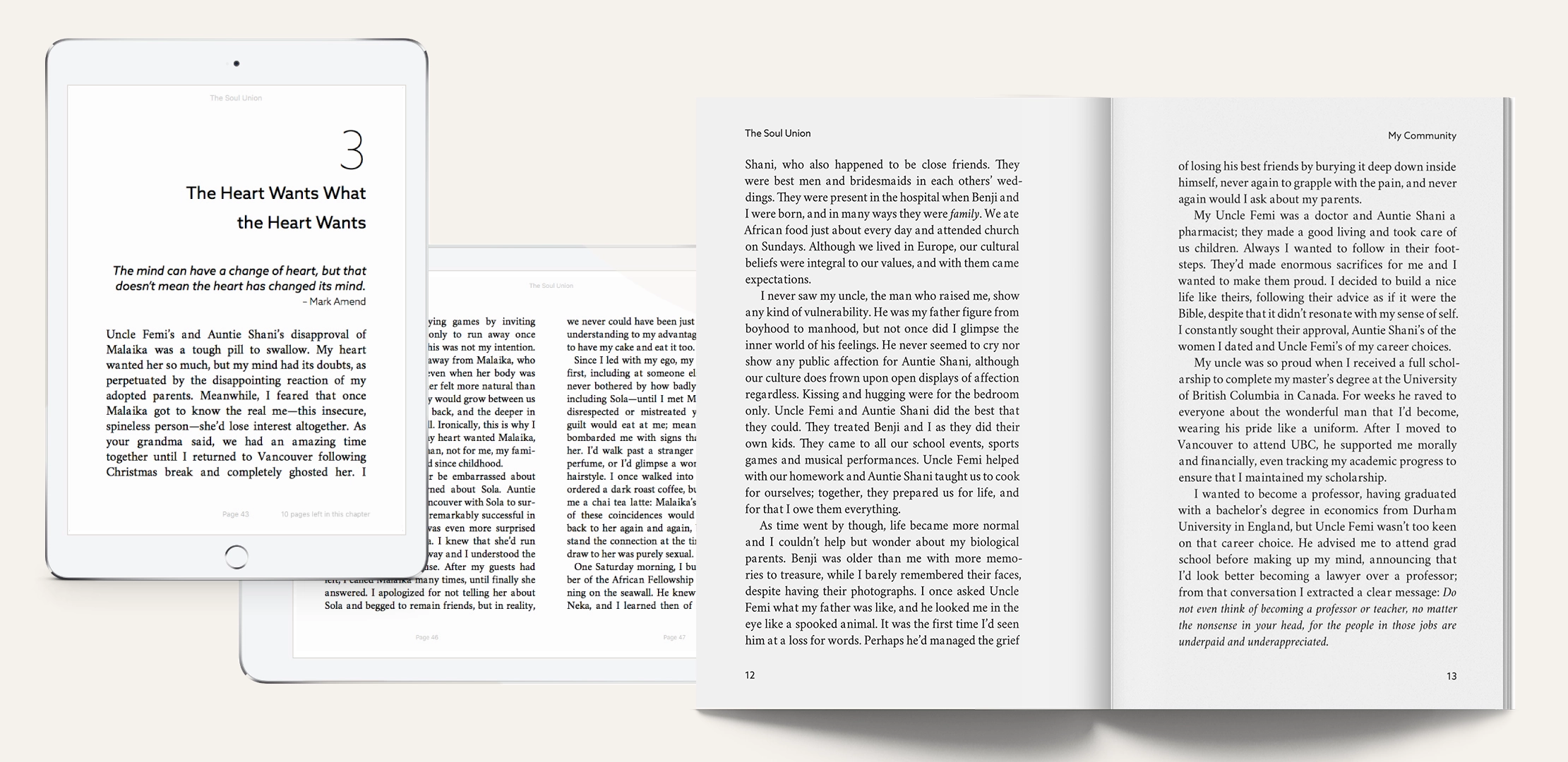What every author should know
Reflowable eBook vs. Fixed Layout
Back when the iPad came out in 2010, many designers started exporting their printed books as beautiful fixed layout eBooks. They looked great and matched the printed book, but a few years later, the industry started to realize that readers weren’t actually interested in eBooks being direct replicas of the printed form. eBooks evolved into a flexible file format to be read across all devices, thus the reflowable ebook format became the preference.

An example of a fixed layout ebook created for the iPad with a horizontal and vertical layout created. Although all the content is fixed, the content will rotate when the iPad is turned.
Why are fixed layout eBooks are no longer the industry standard?
A fixed layout eBook is essentially a PDF of your book. It is flat, which means that anyone with a perceptual disability will not be able to use a screen reader to read your book. The words are embedded on the screen as if they are photos and therefore a screen reader can’t pick them out. This means your book doesn’t exist to a full 2.7% of the entire Canadian population (based on this survey from 2012). Another issue with fixed layout ebooks is that they won’t allow any of your readers to adjust the background colour or text size to optimize their reading experience no matter what ereader they’re using. Regardless of any disabilities, this factor will not please your readers. If you’re going to be publishing an eBook make sure you talk to your designer or publisher to make sure it’s a reflowable ebook file format.
Note: Don’t be fooled by the file type itself, both a reflowable ebook and a fixed layout ebook will have the same EPUB file extension, but they will look very different when you open them up.

These images capture the difference between a printed layout and digital reflowable ebook. This text is of Ana Warner’s new book The Soul Union available on Amazon!
Here are some tips to help define what a reflowable eBooks is:
-
Reflowable ePubs are best suited for simple text only novels with very few graphic elements and design details
-
They reflow the text so that they are usable for all users across all devices, users will be able to change the background colour, the font, and the font size if they desire depending on the type of ereader and software that they’re using. Reflowable eBooks are meant adapt to user’s reading habits and needs.
-
Certain design elements such as charts and graphs can become very difficult for your designer to convert to a flexible digital format. Think of eBooks as mini packaged websites. When you look at a website on your desktop or laptop and you take your cursor, click on the outside corner of your browser and make the window a bit smaller, good websites will respond to the new window size and adjust font sizes and images. Content will start to stack so it’s still readable and visible as the screen gets smaller and smaller. The same thing needs to happen in a reflowable eBook file so that the charts and graphics still look good on all screen sizes. Charts usually require complex coding to look good in this format which can make your ebook conversion cost skyrocket.
-
If your charts can be made into an image and still be legible, that is a possible workaround, rather than hiring an ebook coding professional.
-
It is also worth noting that if you’ve created a highly visual book with many charts or other graphics, an eBook may not be the right choice and your money could go further if used in other marketing efforts for your printed book for example. eBooks are great for novels and other text only books, but the investment to ensure that your graphics look good digitally and are accessible may not be worth it. Talk to your publisher or designer (someone like fleck perhaps) to get a second opinion!
-
-
To create a reflowable eBook from your print book file, your designer will make a few adjustments, and ensure that everything is hyperlinked correctly. The table of contents that is native within each ereading software will be properly connected to the corresponding chapters and sections in your book. From there, the file will be validated and tested to ensure it meets today’s industry standards. Your designer will provide you with the final EPUB file format (the industry standard eBook file type) which can then be uploaded to any digital publishing platform such as Kobo or Kindle.
-
The font that was used in your printed book may not appear on all devices. Don’t worry about this! EBooks are designed to be as readable as possible. It’s not the time to fuss over design, but rather to let your readers enjoy your book however they need to. They may even end up changing the font they want to read it in on their Kindle anyway!


Nice write up.
Thanks for reading!